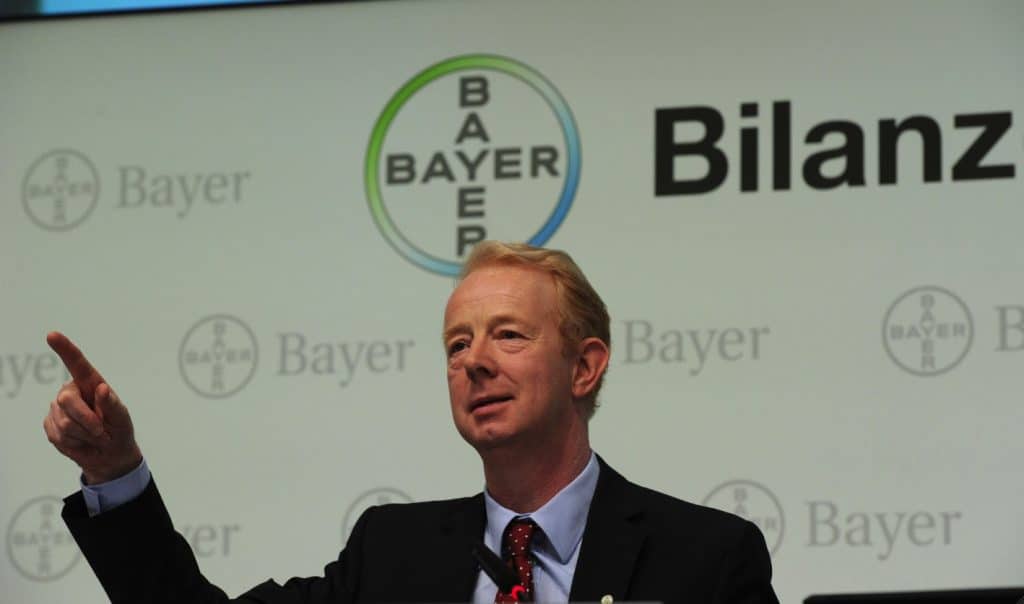
Bayer goes for pharma growth
pharmafile | March 1, 2011 | Feature | Research and Development, Sales and Marketing | 2010 pharma results, Bayer, Dr Jörg Reinhardt, Marijn Dekkers, Nexavar, VEGF Trap-Eye, Xarelto
While many of its larger peers in the pharma sector are rushing to diversify into consumer health and generics, Bayer, already a diversified company, is investing heavily in growing its pharma business.
The company’s new leader Marijn Dekkers joined the company in late 2009, but only officially took over as chief executive in October 2010, and hasn’t yet unveiled any radical strategic moves for the German group.
But unveiling the company’s 2010 results yesterday, the Dutchman made it clear that expanding Bayer’s pharma business, already its most important division, was a top priority.
The results showed 2010 was not good for the company’s two biggest pharma brands, however. Sales of its Yaz oral contraceptive franchise fell 15.8% to €1.11 billion and blockbuster MS drug Betaferon dropped 5% to €1.2 billion.
Good performance across the company’s non-pharma divisions helped rescue the results, with Material Sciences bouncing back with a 35% increase in sales, and Environmental Science, BioScience rising 15.6 per cent. This helped lift overall 2010 revenues by 8% to €35.1 billion, however profits fell 4.3% undermined by a handful of one-off litigation cases and other costs totaling €1.7 billion.
The appeal of a stronger pharma division is clear to Bayer. Even though its Material Sciences division generated almost as much revenue as the pharma division in 2010, the prescription medicine business was three times more profitable than material sciences.
That’s why Dekkers said the company would ‘invest aggressively’ in building its pharma business, from R&D to sales and marketing, and would even contemplate selling off the Material Sciences division if – and only if – a sizeable acquisition in the pharma sphere became available and Bayer needed extra funds to finance the deal.
Meanwhile, Bayer showed its intent at bolstering R&D across all divisions by increasing its budget by 11% in 2010 to €3.1 billion, with half of this spent in pharma R&D.
The pharma division currently delivers less than 30% of Bayer’s total income, but Dekkers says the goal in the medium term is to raise this contribution to 60% of group revenues.
This is a major increase, but should be possible if its newest drugs realise their potential. Chief among these is the blood clot prevention drug Xarelto, which Bayer forecasts will hit peak earnings of €2 billion in the 2016-17 period, but Dekkers said he wouldn’t speculate as to what this would mean in terms of market position and share.
Bayer’s cancer drug Nexavar looks unlikely to scale the same heights as Xarelto in terms of sales, as it trails behind Pfizer’s Sutent in the renal cell carcinoma market. Nevertheless, the company believes it can serve a huge unmet need in liver cancer, particularly in Asia where the disease is much more prevalent.
The man charged with increasing the pharma division’s contribution is Dr Jörg Reinhardt. An experienced pharma executive, Reinhardt was poached from his senior position as chief operating officer at Novartis in April last year.
From this month, Reinhardt will preside over a slimmed down internal decision-making process in his division, which he told Pharmafocus would mean that key R&D and business decisions would now be taken in fewer meetings, with all the pharma department heads around the table at the same time.
In addition to the expanded indications of Xarelto, the next big challenge for Bayer’s pharma division is VEGF Trap-Eye, is a new ophthalmology drug which Bayer has co-developed with US company Regeneron.
The drug will challenge Novartis’ age-related macular degeneration (wet AMD) blockbuster Lucentis. Reinhardt says VEGF Trap-Eye has a more convenient dosing form than its established rival, and “a hint of better efficacy”, but remained coy on how it would be priced.
Reinhardt revealed that 60-70% of patients in the US with wet AMD are now treated with off-label Avastin, which is virtually the same molecule as Lucentis, but is much more economical. This will present a problem for Bayer’s partner Regeneron, which will market the drug in the US, but Reinhardt said off-label Avastin use was nowhere near as great in Europe and the rest of the world, where Bayer holds the marketing rights.
Andrew McConaghie
Related Content

Bayer and Evotec to collaborate on precision cardiology
Bayer and Evotec have announced that they have updated the focus of their collaboration to …

Bayer and Aignostics to collaborate for AI oncology research
Bayer and Aignostics have announced that they have entered into a strategic collaboration for several …

Bayer’s cardiovascular drug shows impressive Phase III results
Bayer’s finerenone drug has been shown to significantly reduce cardiovascular death or other cardiovascular events …








